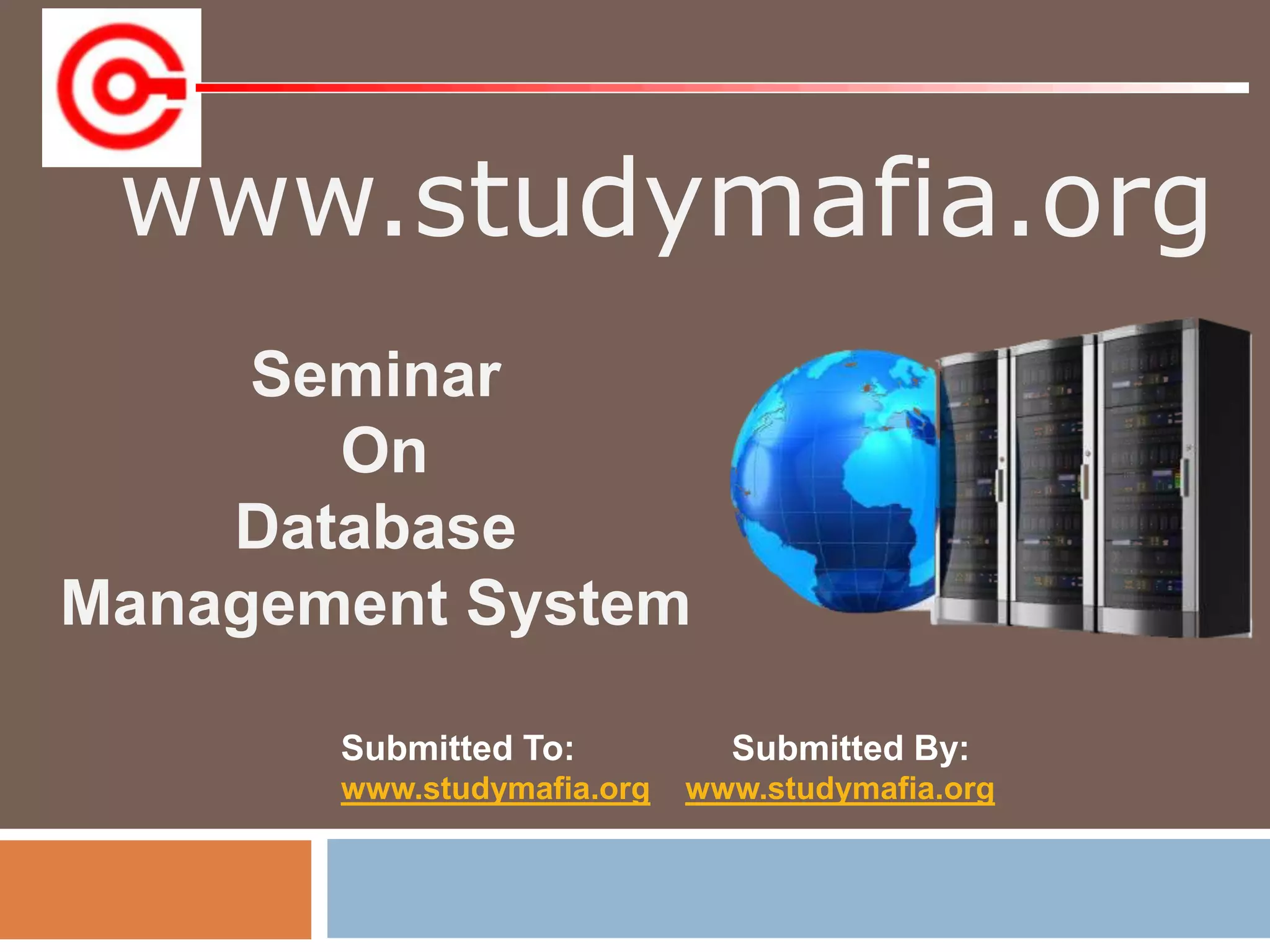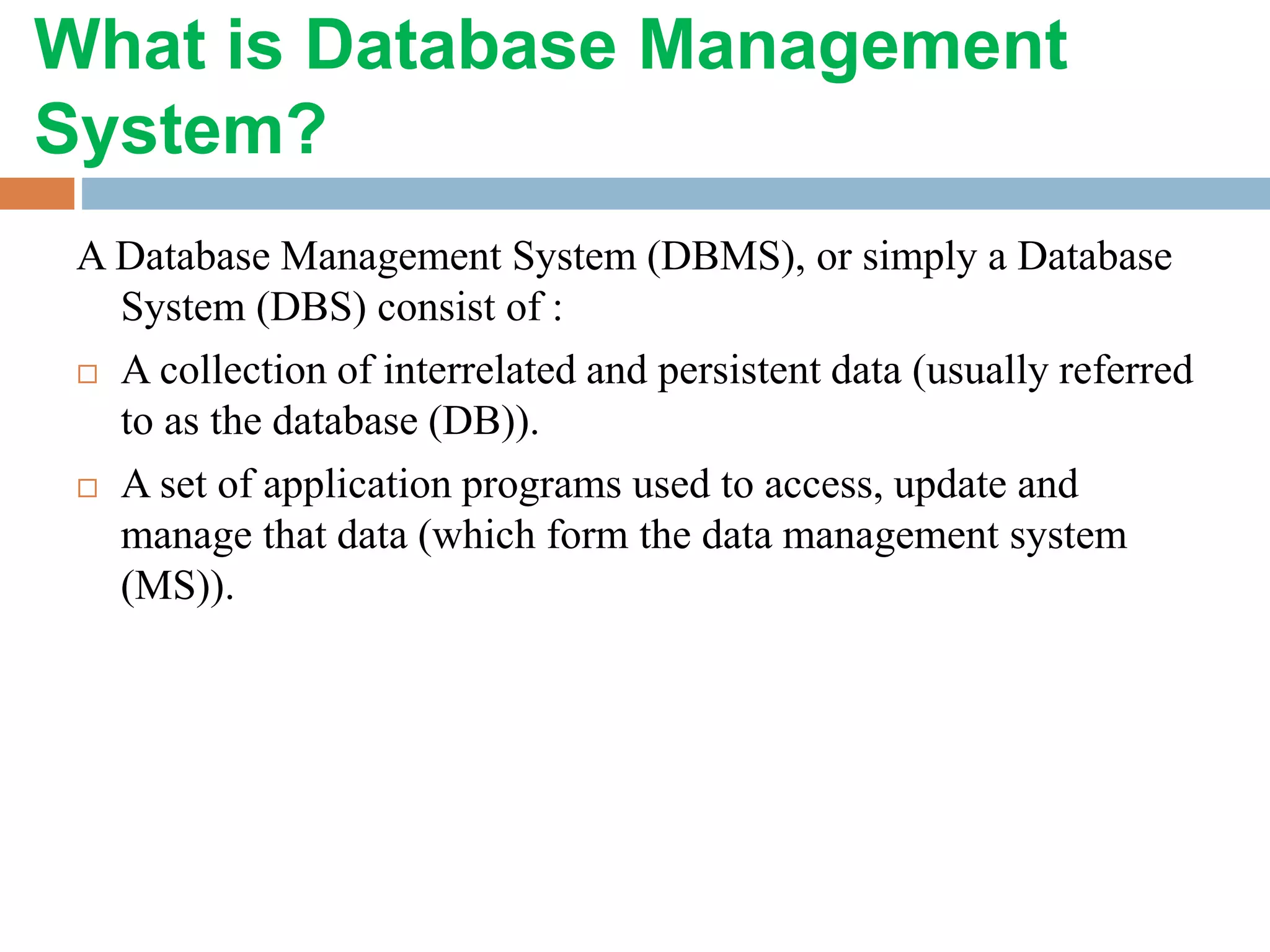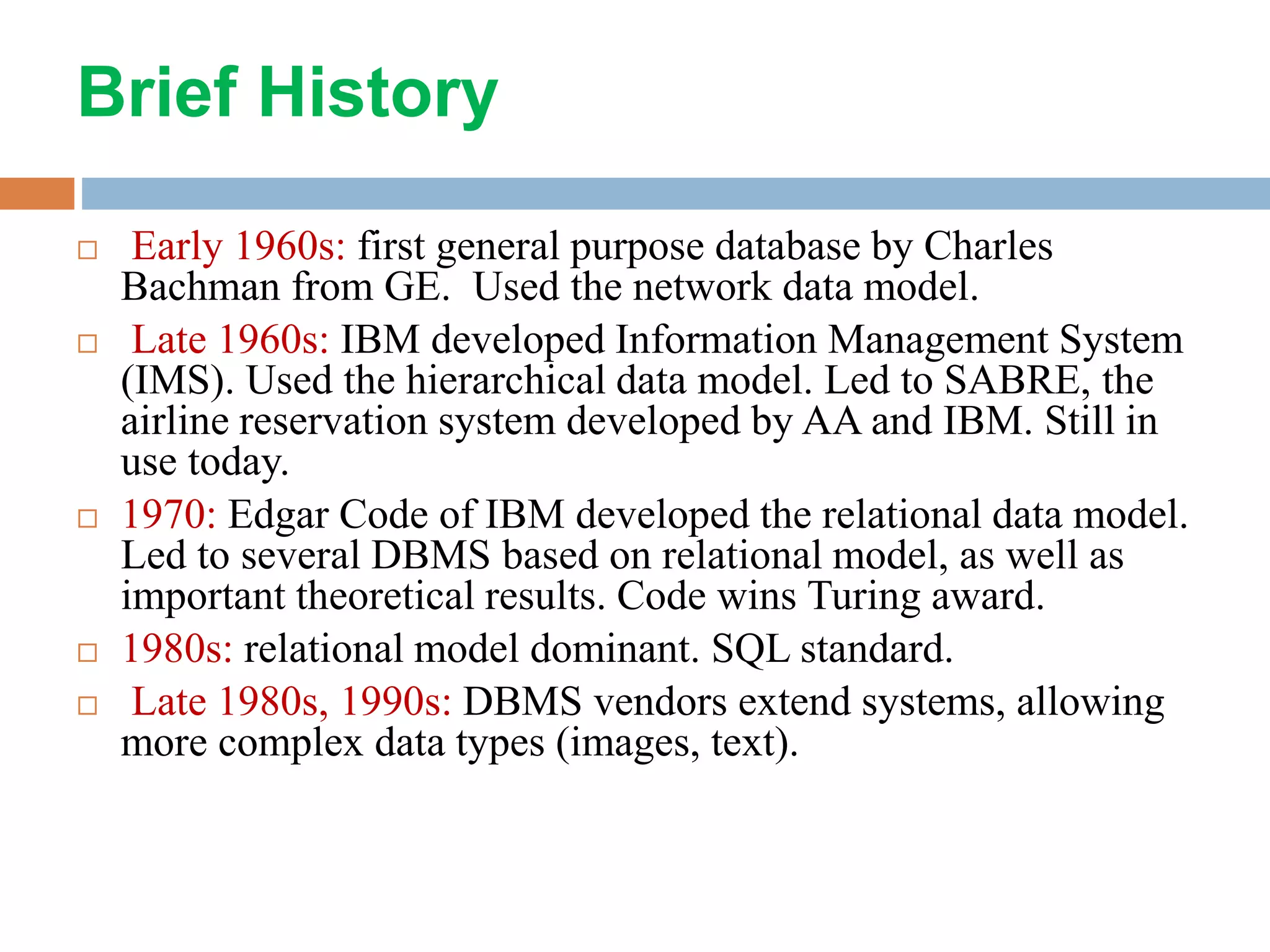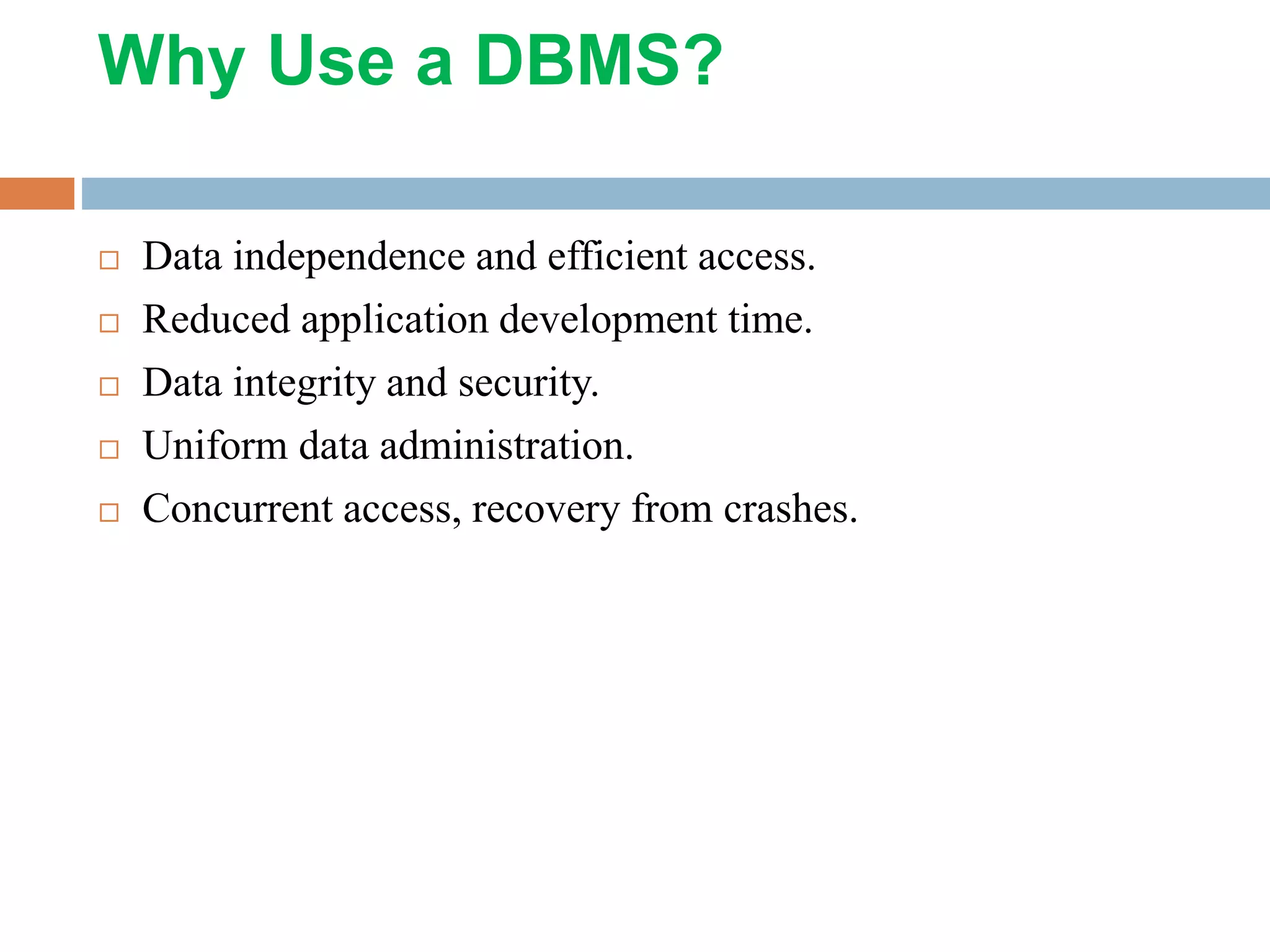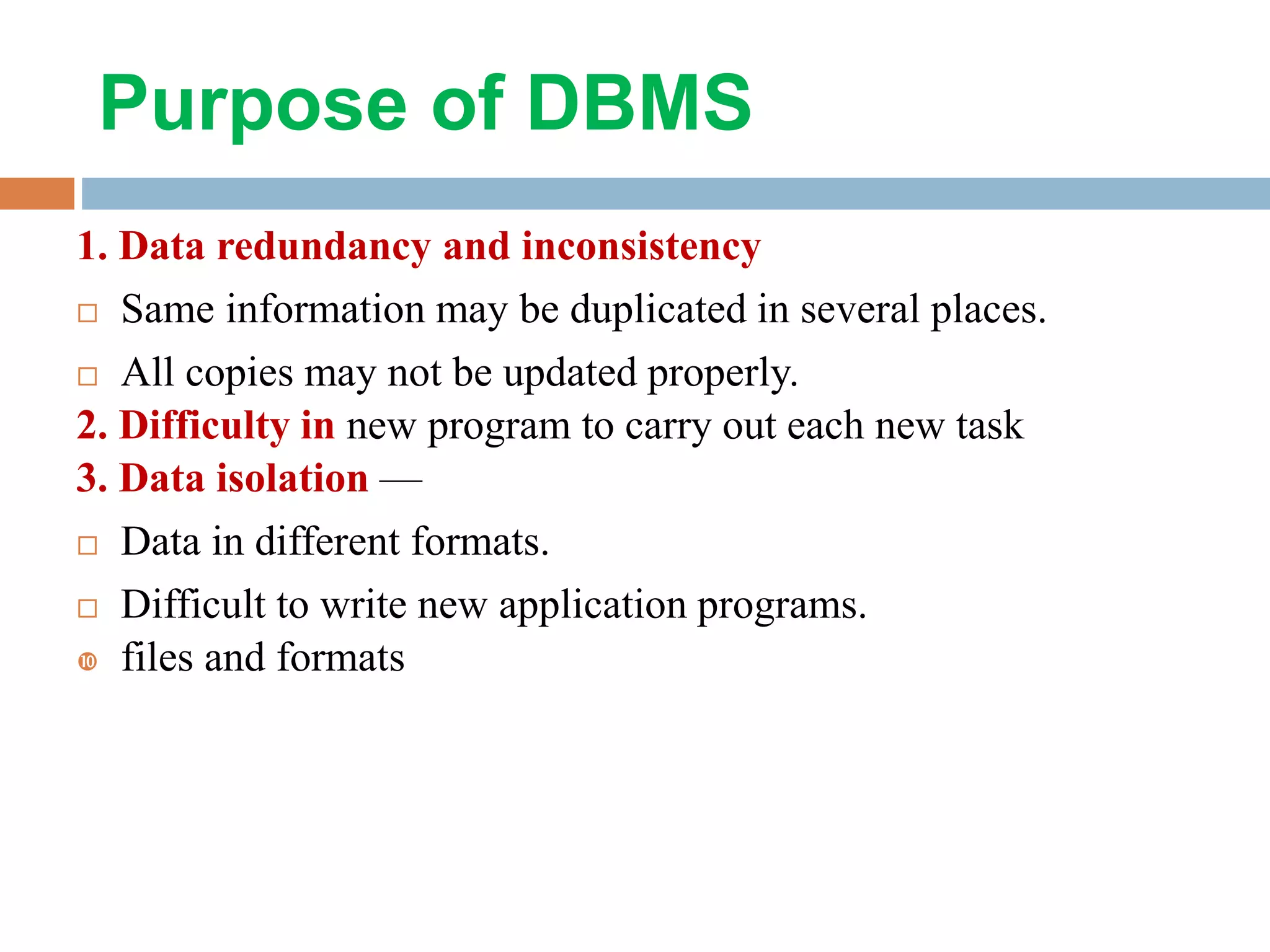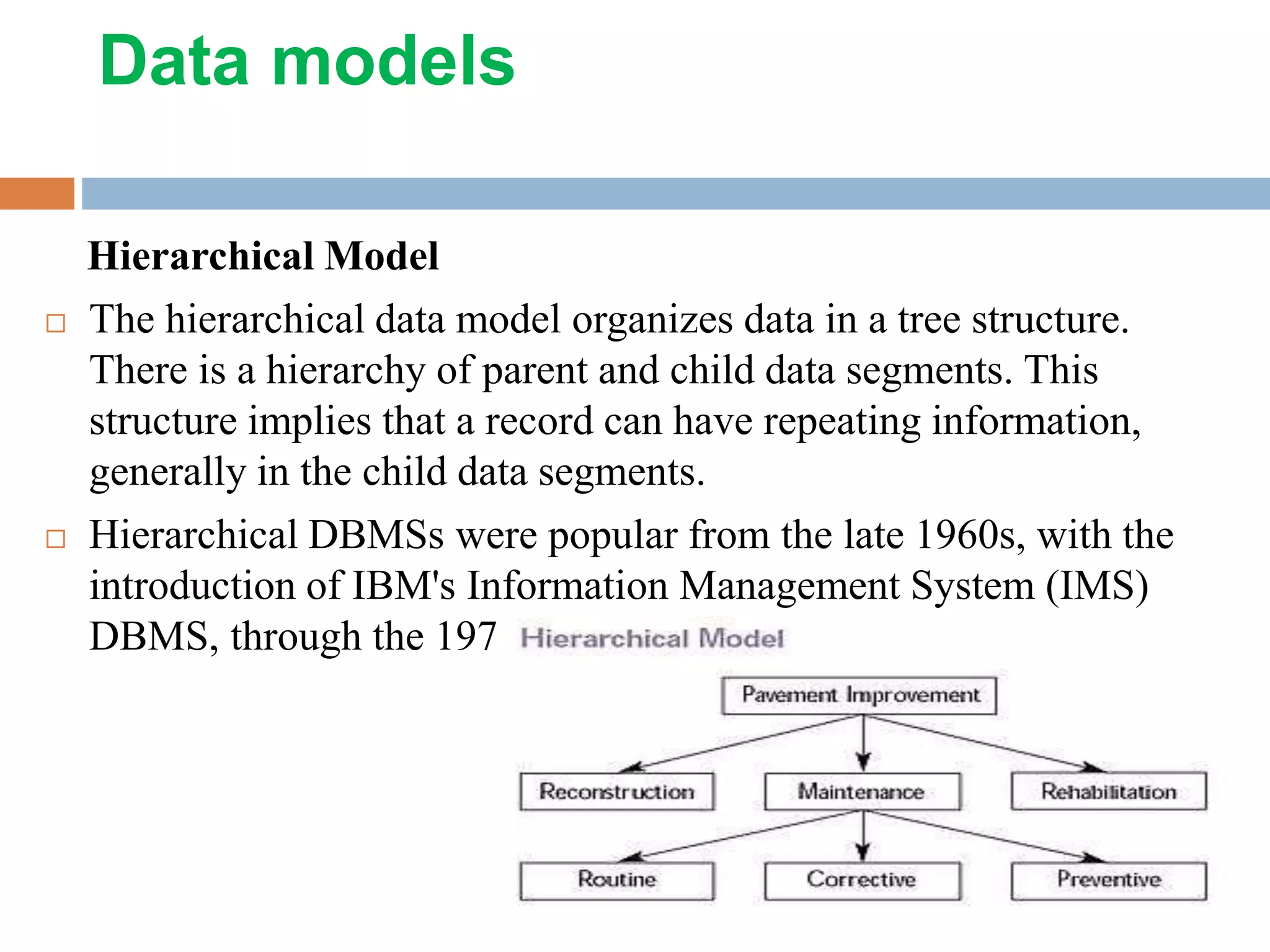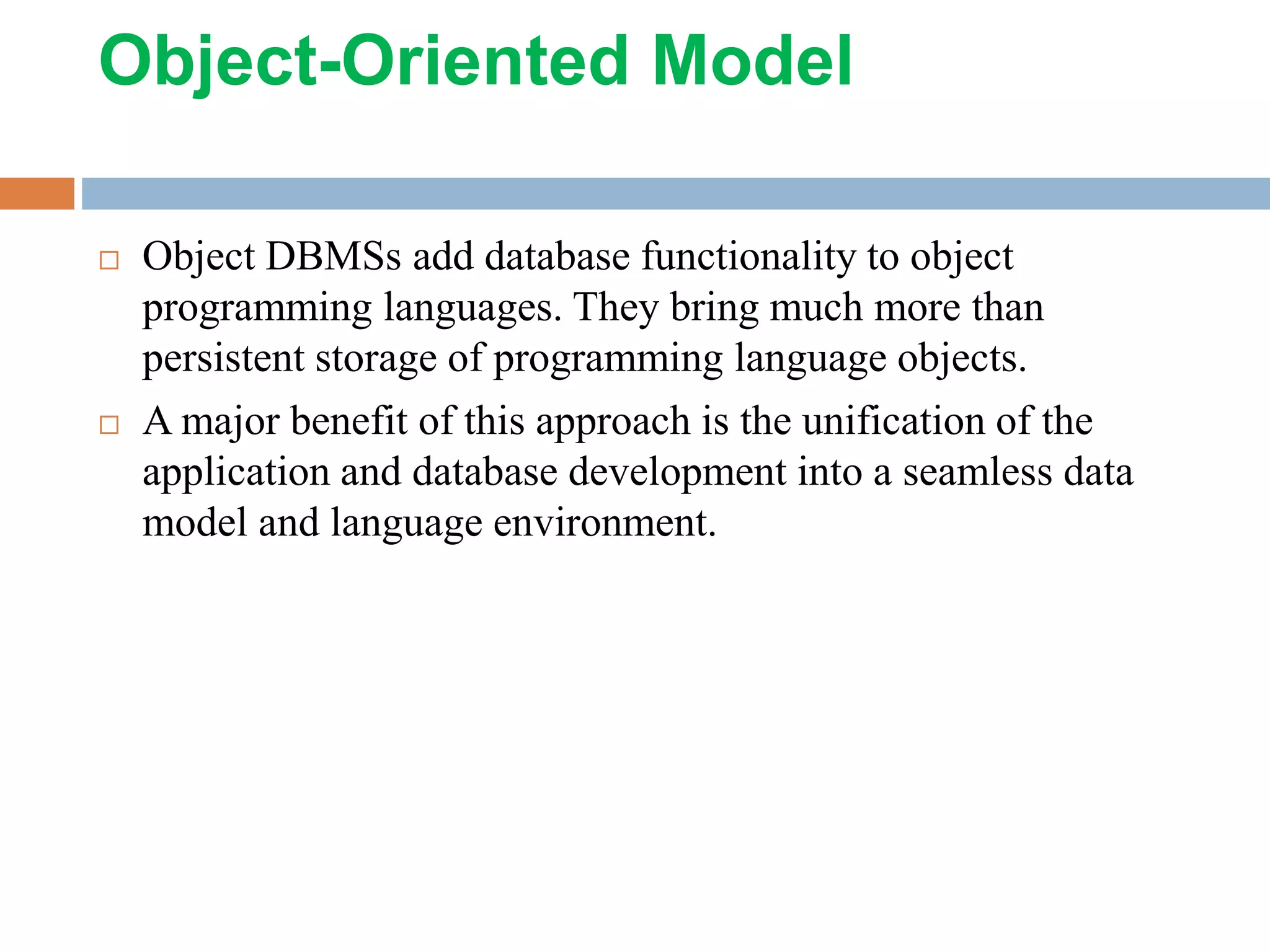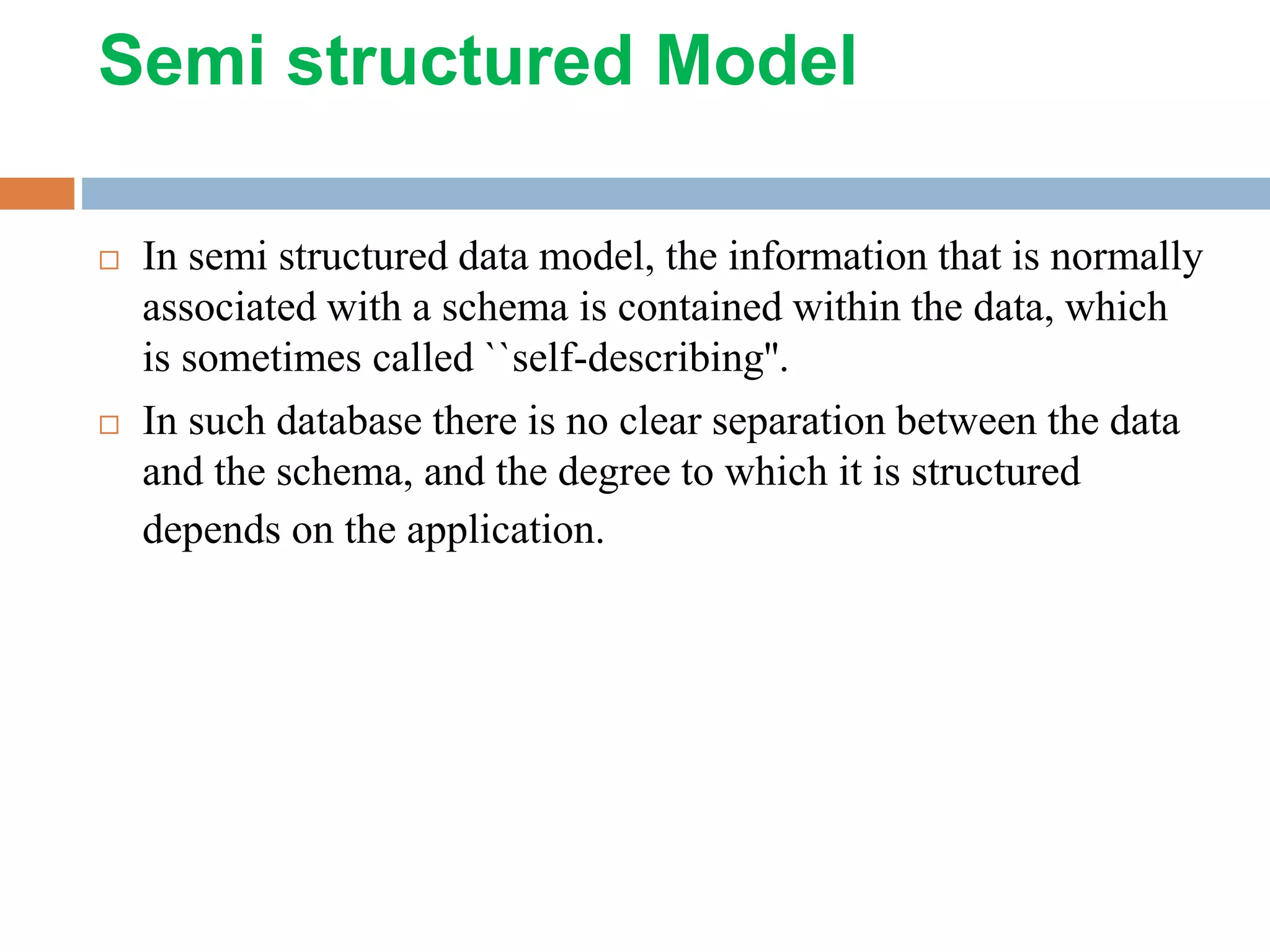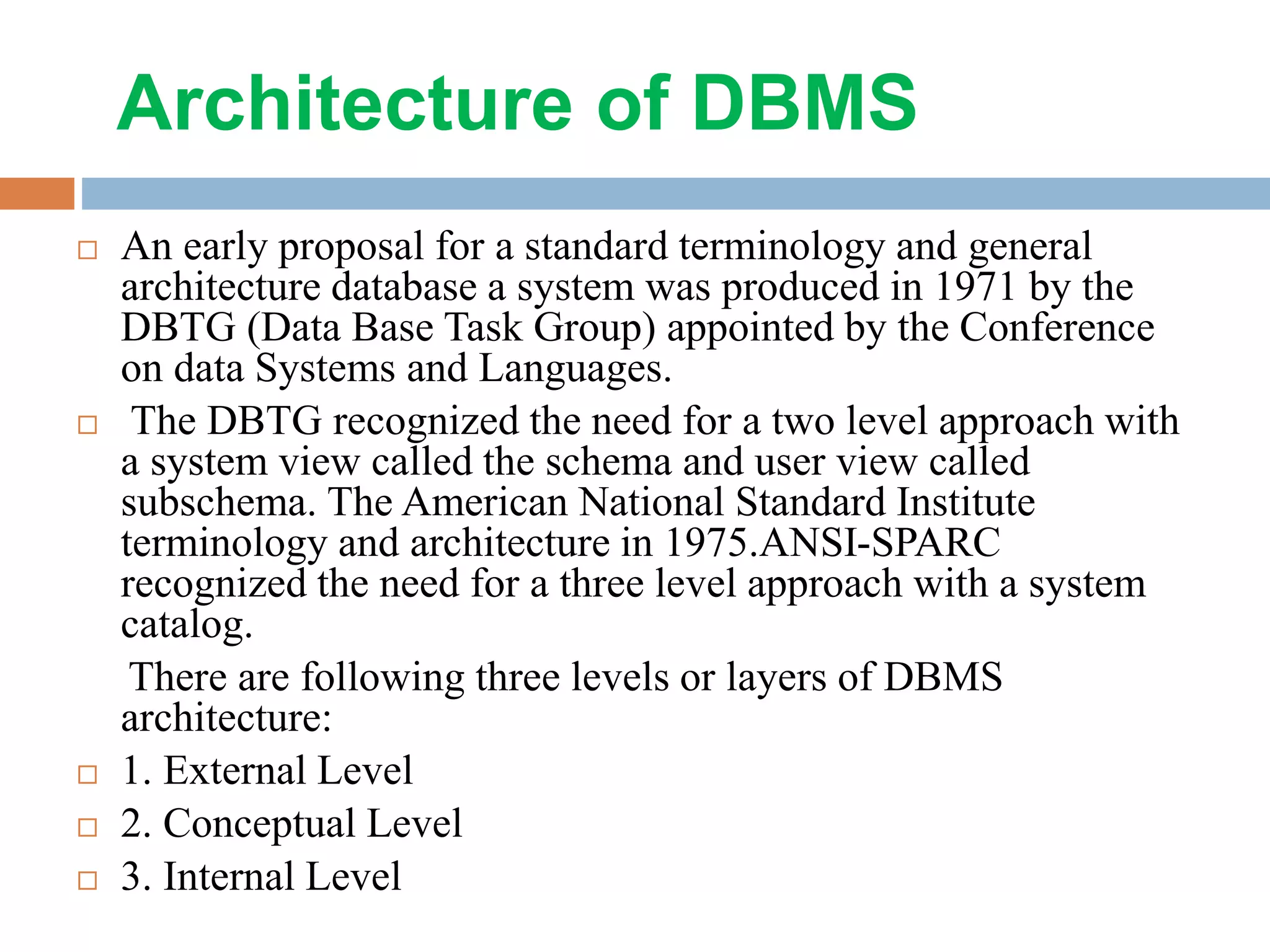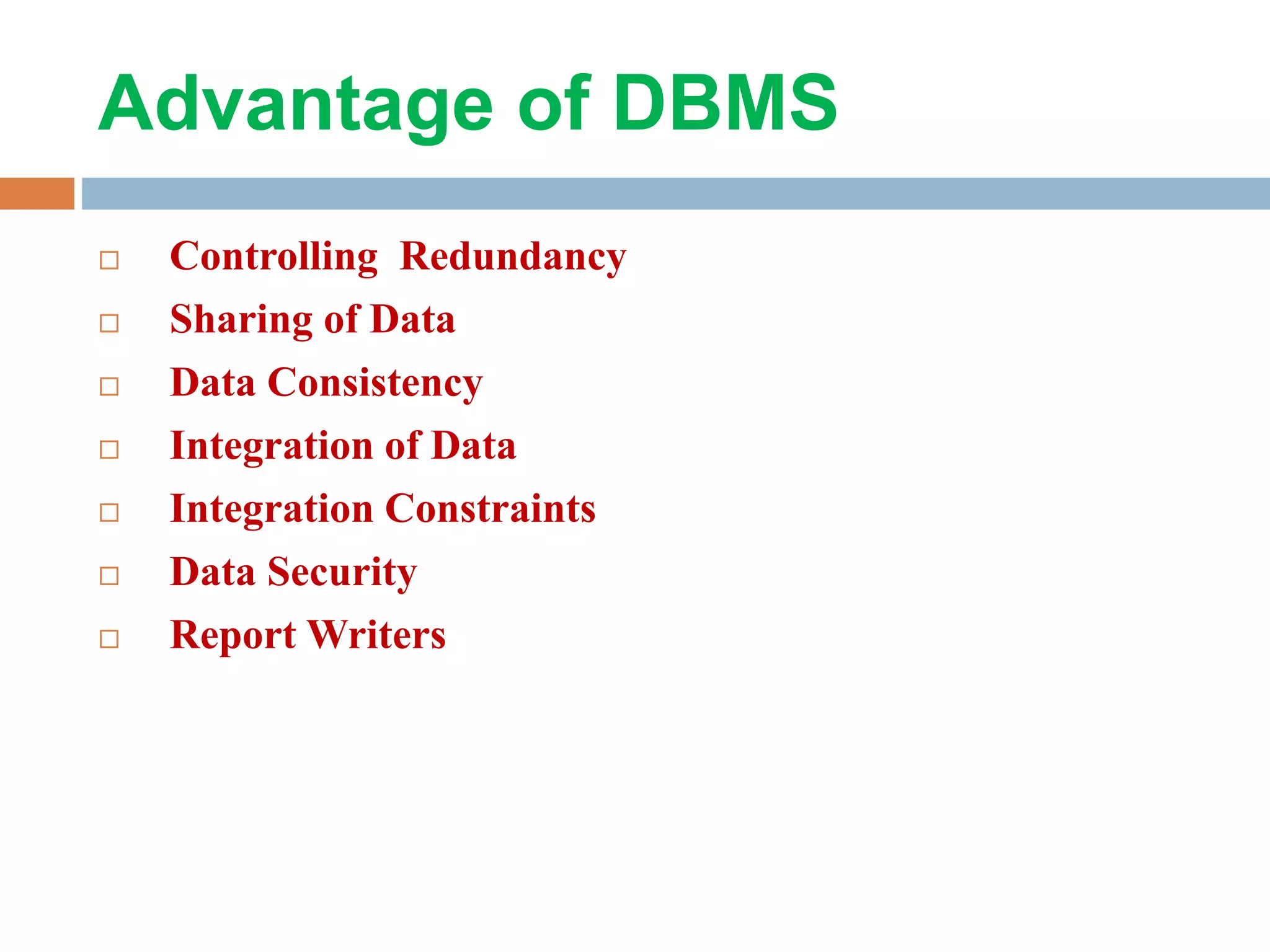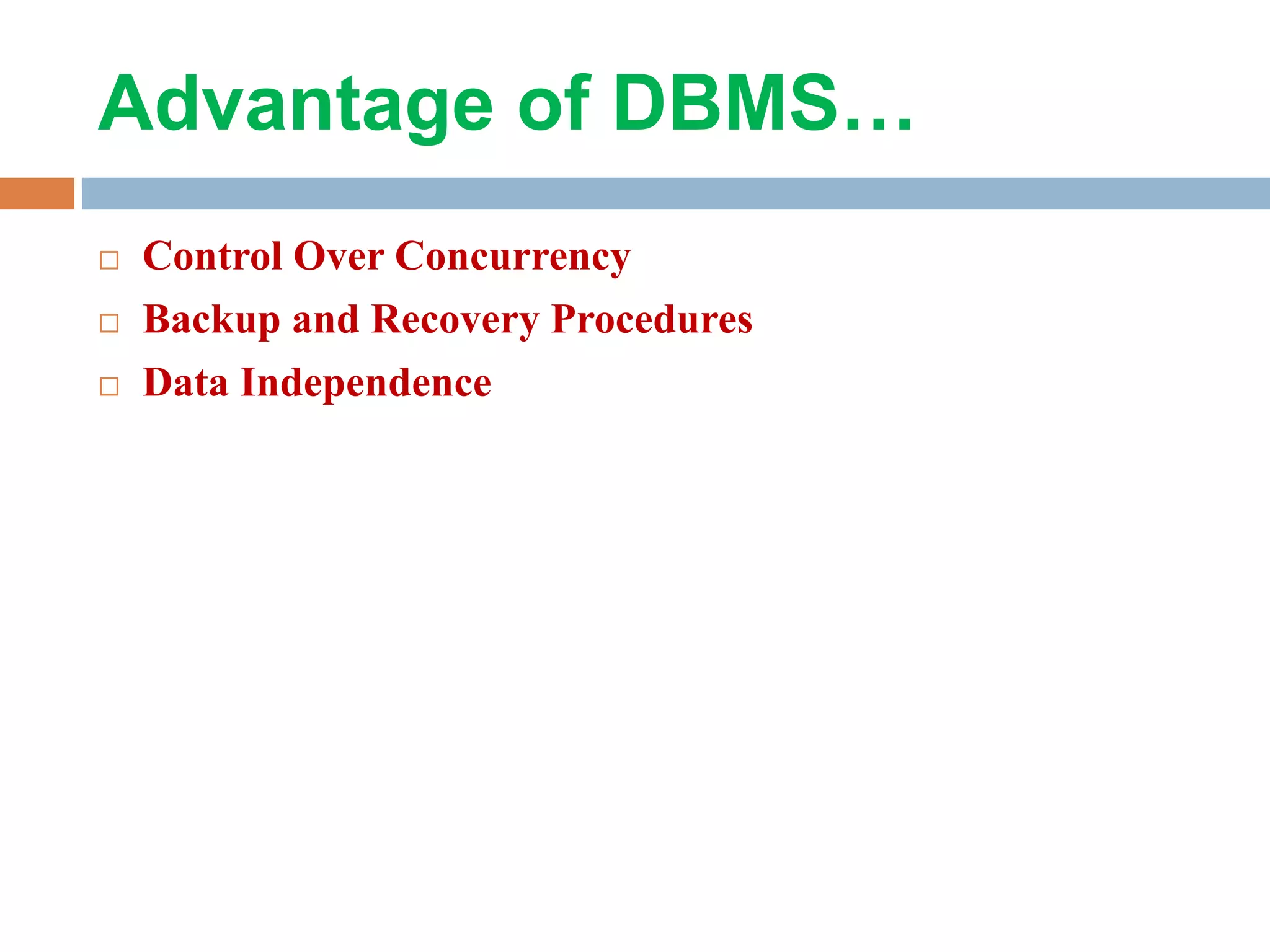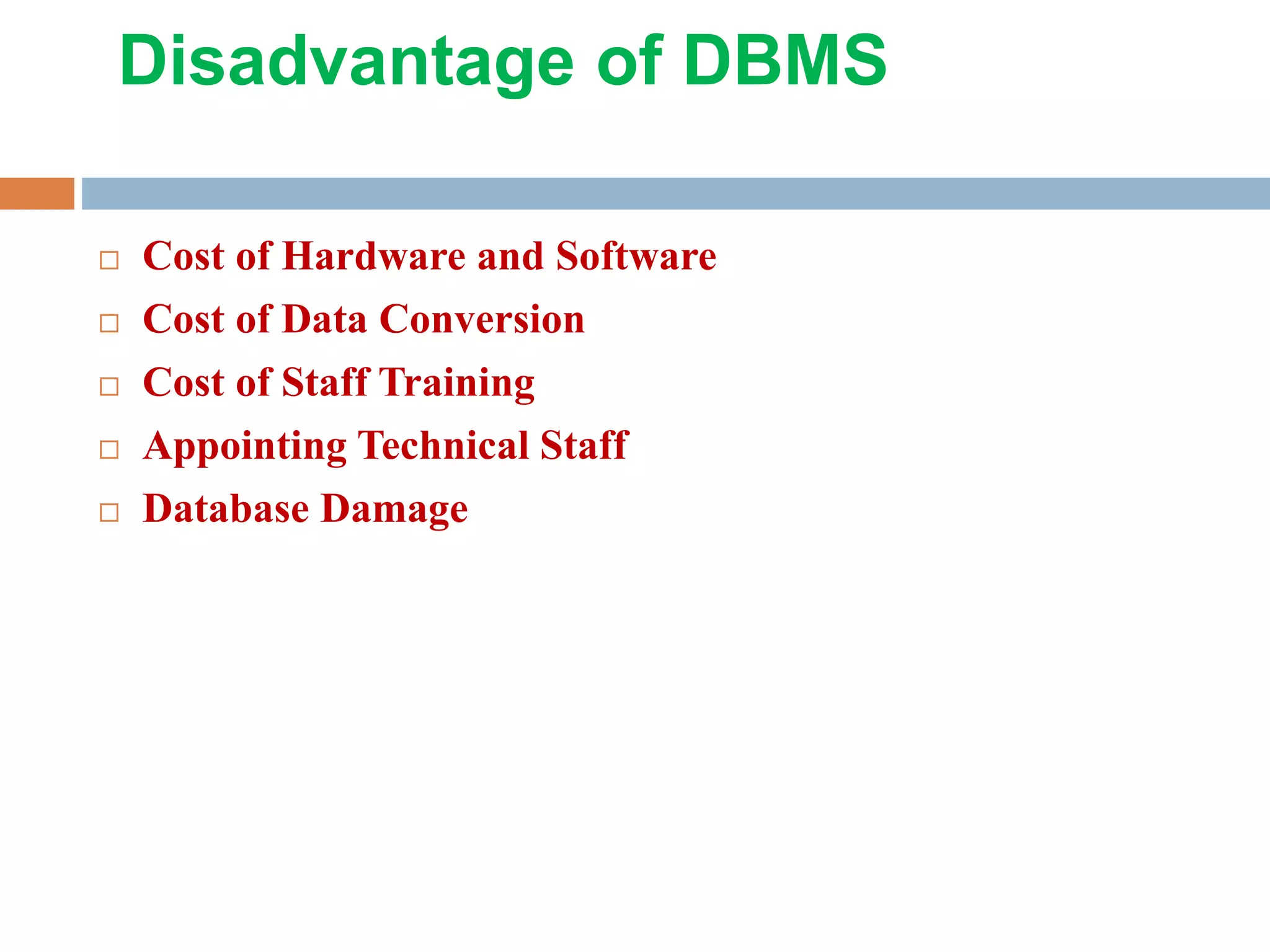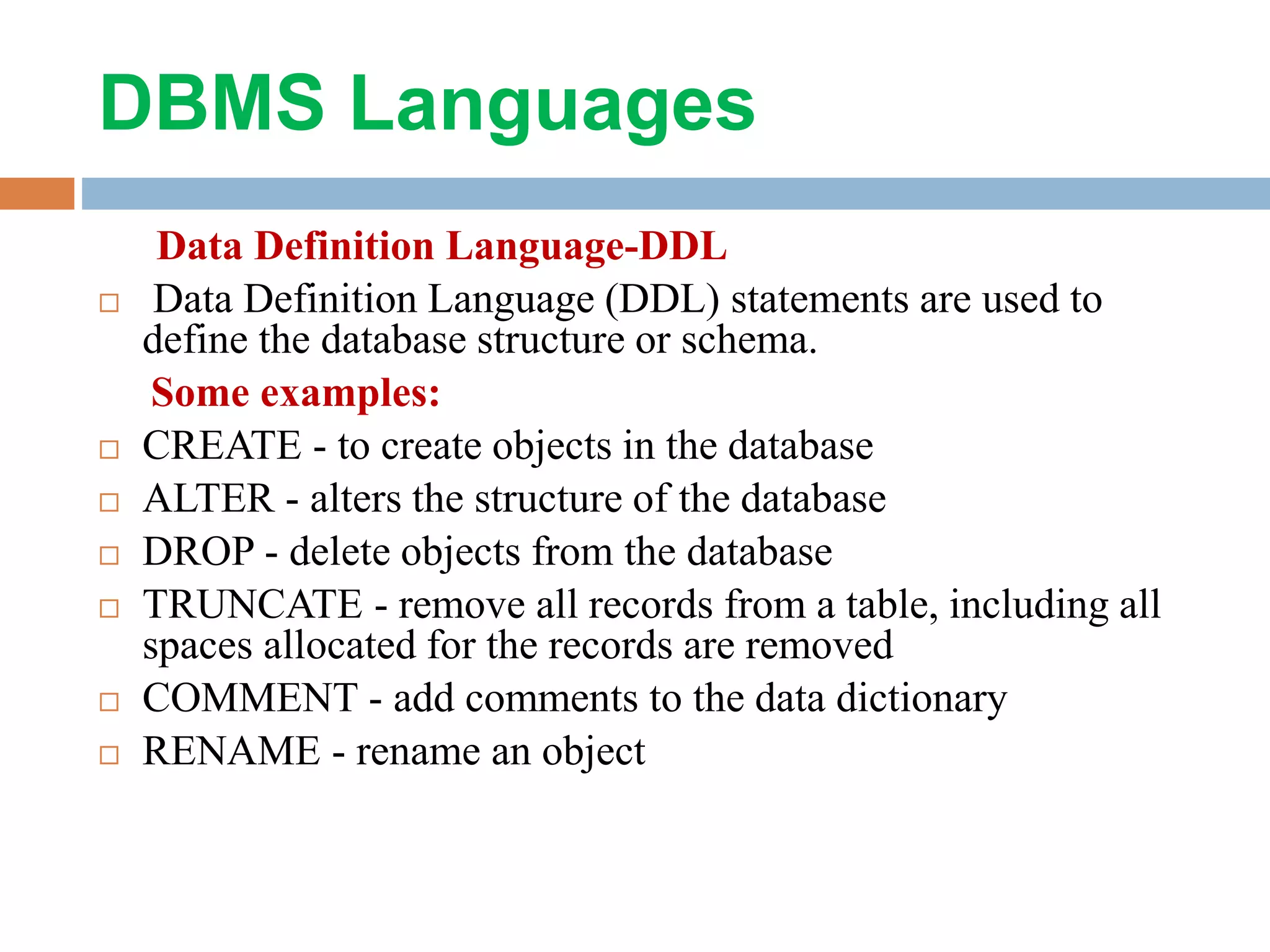This document provides an overview of database management systems (DBMS). It defines a DBMS as a collection of data and set of programs used to access and manage that data. The document then briefly discusses the history of DBMS development from early hierarchical models in the 1960s to relational models today. It describes the purposes of a DBMS in ensuring data integrity, reducing redundancy, and improving security and access. The document outlines several data models used in DBMS, including hierarchical, network, relational, object-oriented, and semi-structured models. It describes the typical architecture of a DBMS including external, conceptual, and internal levels. Key components and advantages/disadvantages of DBMS are also summarized, along with
